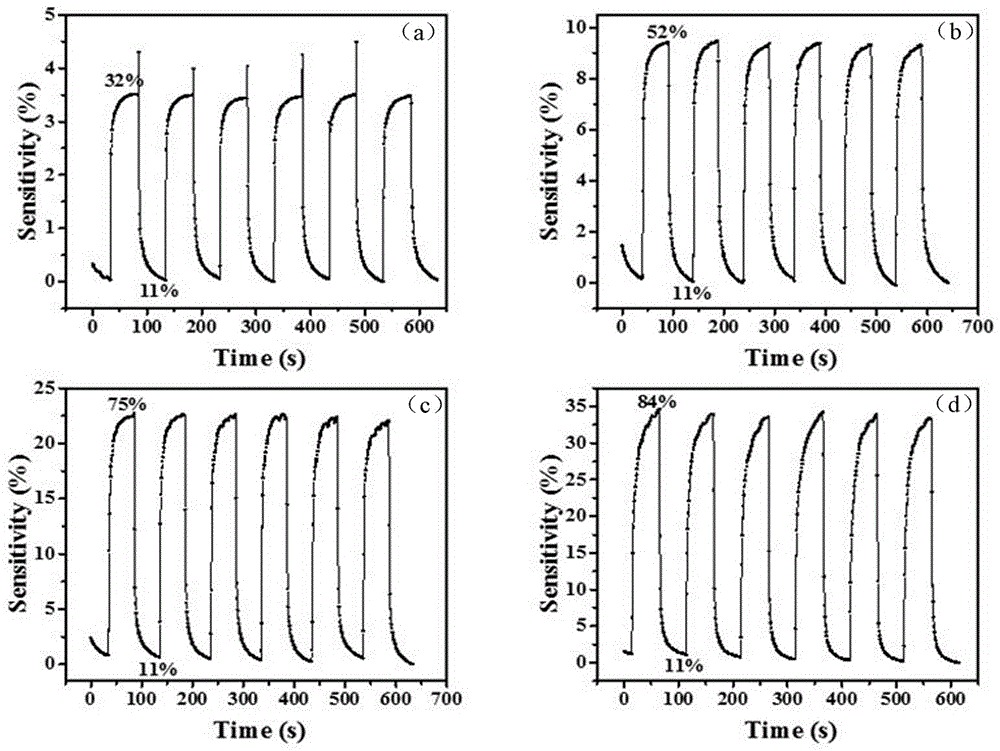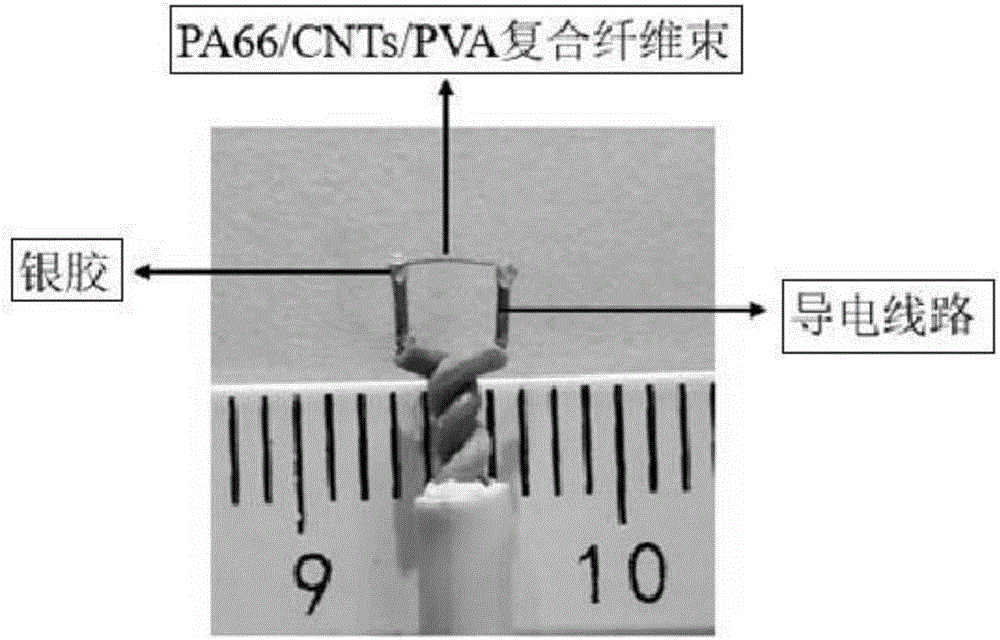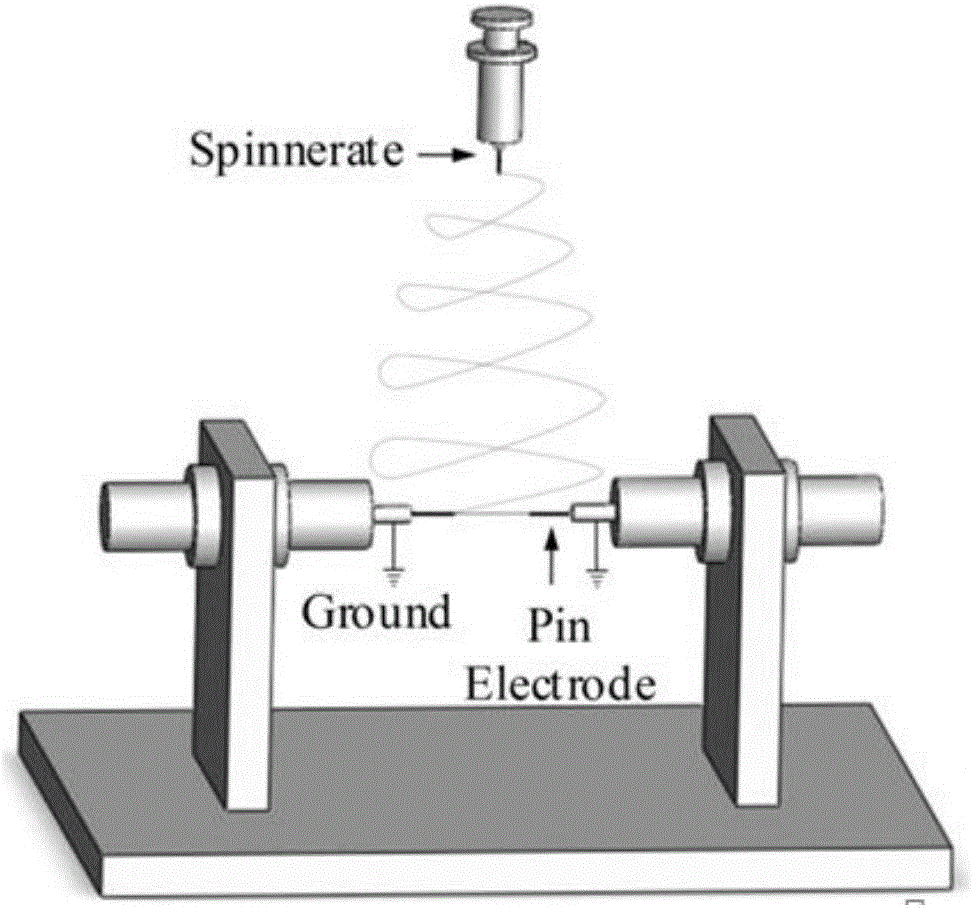Minitype resistance humidity sensor and its preparation method
A humidity sensor and resistive technology, applied in the field of humidity-sensitive materials, can solve the problems of limiting the wide application of humidity sensors, long response time, complicated manufacturing process, etc., and achieve the effects of excellent cycle stability, simple preparation method and small unit area.
- Summary
- Abstract
- Description
- Claims
- Application Information
AI Technical Summary
Problems solved by technology
Method used
Image
Examples
Embodiment 1
[0046] A miniature resistive humidity sensor such as figure 1 As shown, the sensor includes PA66 / CNTs / PVA composite fiber bundles and conductive lines, and the composite fiber bundles are fixedly connected to the conductive circuits by silver glue; the composite fiber bundles include PA66 fiber bundles, carboxylated carbon nanotubes and Polyvinyl alcohol; the carbon nanotubes are attached to PA66 fibers to form composite fiber bundles, and polyvinyl alcohol is wrapped on the surface and inside of the composite fiber bundles. The PA66 nano fiber bundle has a length of 0.5 cm and a diameter of 100-120 μm; the PA66 / CNTs / PVA composite fiber bundle has a length of 0.5 cm and a diameter of 35-40 μm.
Embodiment 2
[0048] A miniature resistive humidity sensor, the difference from Example 1 is that the length of the PA66 nanofiber bundle is 0.3cm and the diameter is 80-100μm; the length of the PA66 / CNTs / PVA composite fiber bundle is 0.3cm cm, with a diameter of 30-35 μm.
Embodiment 3
[0050] One of the preparation methods of the miniature resistive humidity sensor described in the foregoing embodiments comprises the following steps:
[0051] (1) Take the PA66 particles of EPR27 and add them to formic acid, heat and stir at 80°C for 1 hour to obtain a spinning solution with a mass percentage of 15%, and then prepare PA66 nanofibers with a length of 3 cm by electrospinning bundle, such as image 3 shown;
[0052] The electrospinning device adopted in the electrospinning process described in this step is as follows: figure 2 Shown: the device includes a high-voltage power supply, a spinning needle (syringe needle) and a receiving device; the receiving device is a flat base and two opposite needles fixedly connected to it; the spinning needle (syringe needle) The distance between the two oppositely placed needles in the receiving device is 25 cm, and the distance between the two oppositely placed needles in the receiving device is 3 cm;
[0053] The electros...
PUM
| Property | Measurement | Unit |
|---|---|---|
| diameter | aaaaa | aaaaa |
| length | aaaaa | aaaaa |
| diameter | aaaaa | aaaaa |
Abstract
Description
Claims
Application Information
 Login to View More
Login to View More - R&D
- Intellectual Property
- Life Sciences
- Materials
- Tech Scout
- Unparalleled Data Quality
- Higher Quality Content
- 60% Fewer Hallucinations
Browse by: Latest US Patents, China's latest patents, Technical Efficacy Thesaurus, Application Domain, Technology Topic, Popular Technical Reports.
© 2025 PatSnap. All rights reserved.Legal|Privacy policy|Modern Slavery Act Transparency Statement|Sitemap|About US| Contact US: help@patsnap.com



